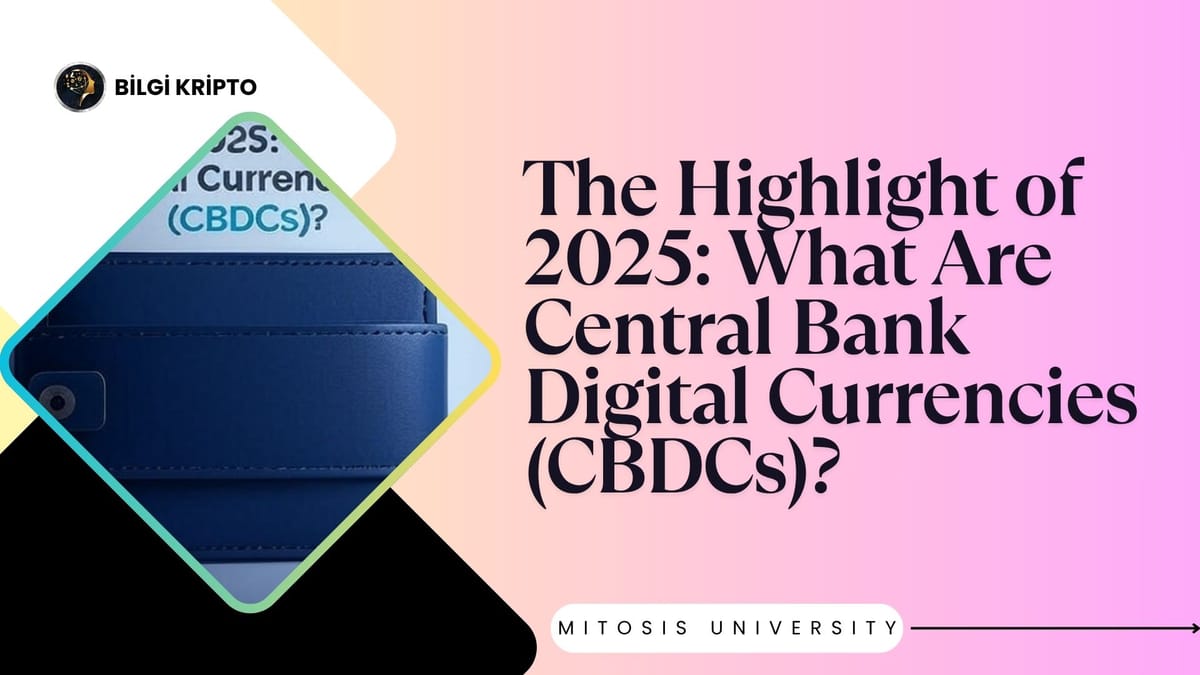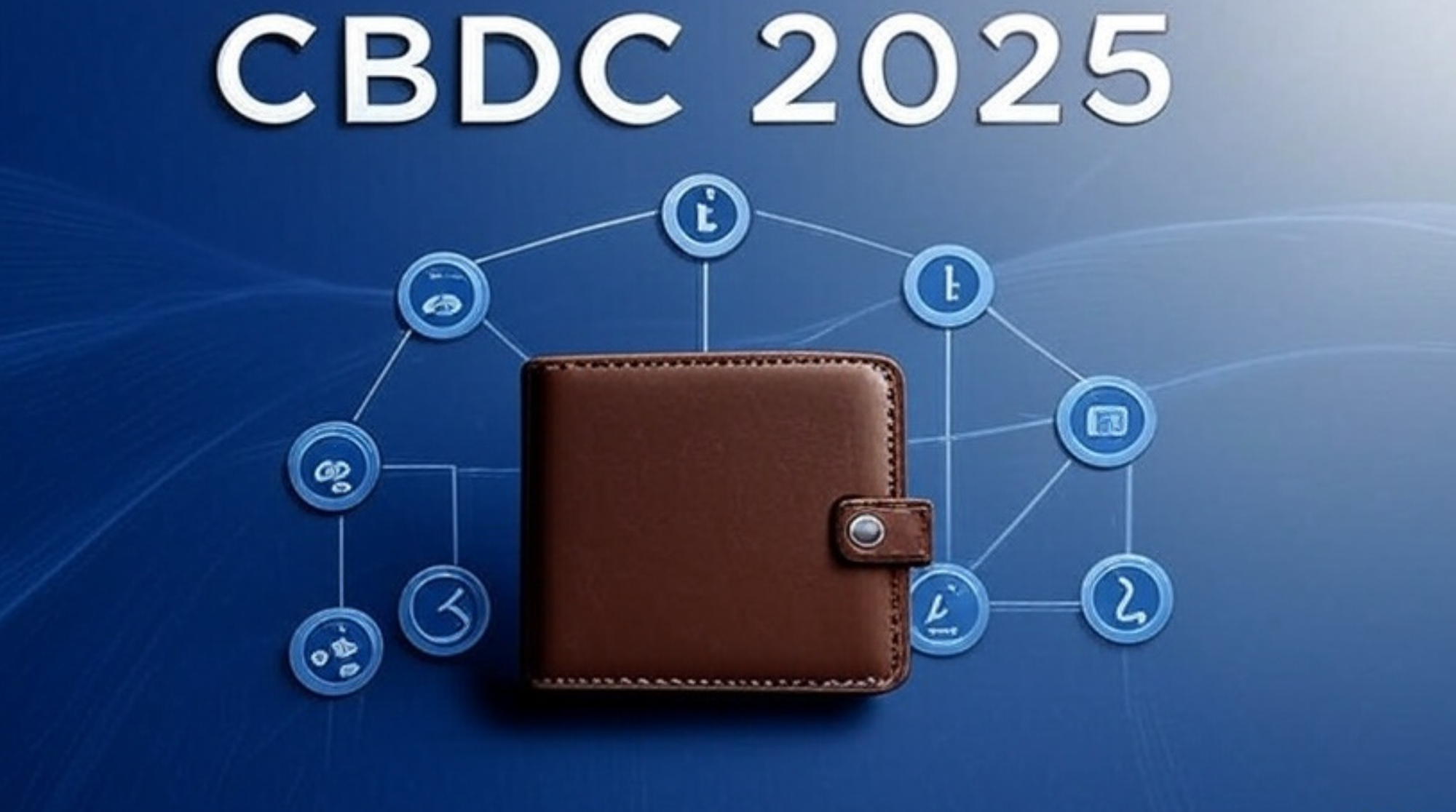The Highlight of 2025: What Are Central Bank Digital Currencies (CBDCs)?

Introduction: The Evolution of Money in a Digital World
As of 2025, the global financial transformation has accelerated like never before. While traditional financial systems struggle to keep up with the digitizing world, central banks have started seeking new solutions: Central Bank Digital Currencies, or CBDCs.
"Bitcoin is great, but why can't I buy my morning coffee with it?" This question summarizes today’s digital financial transformation. While cryptocurrencies have pushed boundaries, governments are searching for ways to embrace digitalization without losing control. That’s where government-backed digital currencies CBDCs enter the stage.
What Is a Central Bank Digital Currency (CBDC)?
Definition
A CBDC is the digital version of fiat currency issued by a country's central bank. Like physical banknotes, it is legal tender but it exists purely in digital form.
In short: CBDC = Digitized Turkish Lira, Euro, Dollar, or Yuan.
Technical Structure
- Some CBDCs may be developed using blockchain or distributed ledger technologies (DLT).
- Others might rely solely on centralized databases.
- Typically, they operate on permissioned networks — meaning transactions can only be processed by authorized institutions.

Differences Between CBDCs and Cryptocurrencies
| Feature | CBDC | Cryptocurrencies (e.g., Bitcoin) |
|---|---|---|
| Issuing Authority | Central Bank | No central authority |
| Legal Tender | Yes | No (in most countries) |
| Censorship Resistance | Low (controlled structure) | High (permissionless) |
| Reversible Transactions | Possible | Not possible (for Bitcoin) |
| Anonymity | Limited | Relatively higher |
Example:
When a payment is made with China's digital yuan (e-CNY), the transaction is fully traceable and can be stopped if necessary. In contrast, Bitcoin offers no such intervention capability.
Why Are CBDCs Being Developed?
1. Enhancing Financial Inclusion
Billions of people around the world still do not have access to bank accounts. CBDCs could enable individuals with just a smartphone to access basic financial services.
2. Accelerating Payment Systems
Today, interbank transfers via systems like SWIFT can take hours or even days. With CBDCs, real-time payment infrastructure could reduce transactions to mere seconds.
3. Reducing Costs
Printing, distributing, and safeguarding physical cash involves significant costs. Digital currencies minimize these expenditures.
4. Oversight and Transparency
Every transaction made with a CBDC is recorded. This facilitates tracking illegal activities, reducing tax evasion and money laundering.
Which Countries Are Working on CBDCs?
China – Digital Yuan (e-CNY)
China is a pioneer in this field. Since 2014, it has been developing the DC/EP (Digital Currency/Electronic Payment) system. It is actively being tested in cities like Beijing and Shanghai.
Europe – Digital Euro
The European Central Bank has been researching the digital euro since 2020. As of 2025, pilot programs have been launched in some member states.
Turkey – Digital Turkish Lira
The Central Bank of the Republic of Turkey conducted the first phase of digital lira tests in 2023. Widespread rollout is planned for 2025.
Nigeria – eNaira
Launched in 2021, eNaira became Africa’s first CBDC and continues to be rapidly adopted.

Are CBDCs and Stablecoins the Same?
Though both are digital assets representing fiat currencies, there are major differences between them.
What Is a Stablecoin?
- Usually issued by private companies
- Pegged to fiat currencies like USD or EUR (e.g., USDT, USDC)
What Is a CBDC?
- Issued by governments
- Requires no collateral, as it is backed directly by a central bank
- Its value is equal to the official fiat currency
Do CBDCs Carry Any Risks?
Yes, CBDCs come with potential concerns:
- Privacy issues: Government surveillance of all transactions may raise data privacy concerns among citizens.
- Impact on the banking system: People may prefer to store their money directly with the central bank, leading to reduced deposits in commercial banks.
- Cybersecurity threats: Hacking government-issued digital currencies could trigger severe economic crises.
Frequently Asked Questions
Are CBDCs the same as cryptocurrencies?
No. While inspired by cryptocurrencies, CBDCs are controlled by the state and operate in centralized structures.
Will physical money disappear entirely?
Not in the short term. However, CBDCs may significantly reduce cash usage in the long run.
Can CBDCs be used for cross-border payments?
Yes, but interoperability is required. Cross-border CBDC bridges are being developed.
Conclusion: CBDCs Are Reshaping the Future
The year 2025 marks a milestone as central banks’ efforts to digitize money become tangible. CBDCs are not only changing how we pay they are redefining the nature of money, the workings of economies, and the roles of central banks.
Thanks to CBDCs:
- Payments become faster and cheaper
- More people gain access to the financial system
- Central banks can respond more effectively during economic crises
Yet, this wave of digitalization will be tested against core values like privacy, security, and freedom.
Do CBDCs truly bring financial freedom or are they the new tools of digital surveillance?
The answer to this question will unfold in the years ahead.
Recommendation: Don’t Miss the Crypto and CBDC Transformation
If you're looking to explore the world of cryptocurrencies, consider checking out reliable platforms to buy Bitcoin (BTC). Embracing technology early can help you become an active part of the digital future



Comments ()